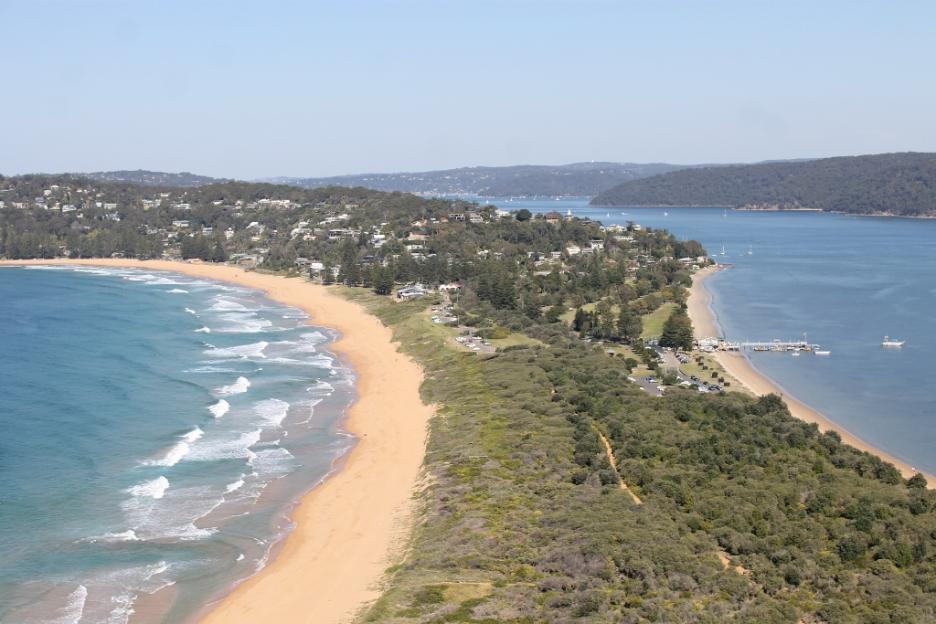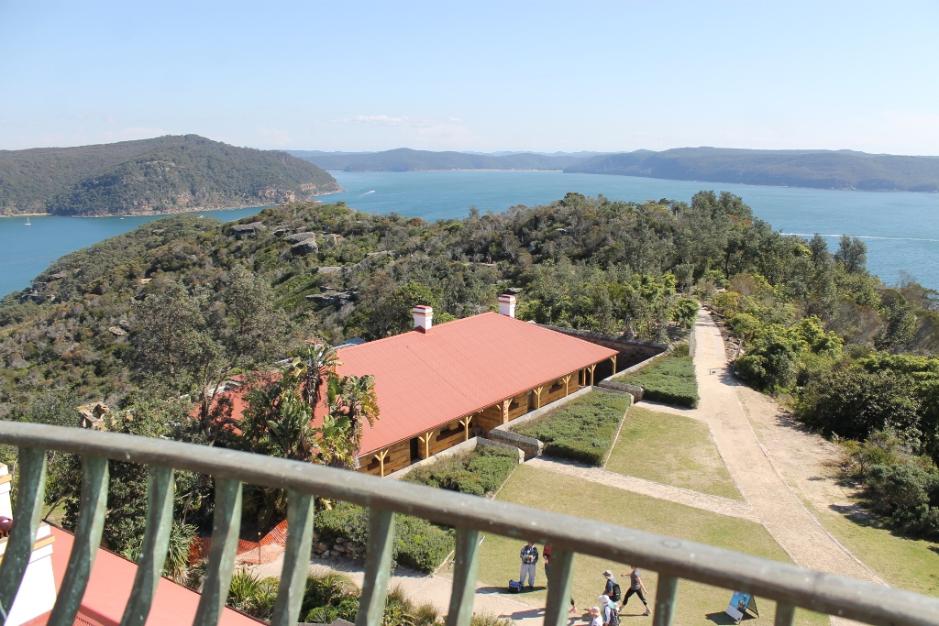October 27 - November 2, 2013: Issue 134
John Ogden
When it comes to surf photography the name 'Oggy' is synonymous with the formative years of Tracks magazine and the rise of this sport as part of our culture. John Ogden is much more then a surf photographer though, and has travelled a much longer road than many would know about. John is kindly sharing some extracts from his new book 'Slightly Dangerous' as our Artist of the Month for November 2013 and this provides an opportunity to learn more about the man himself.
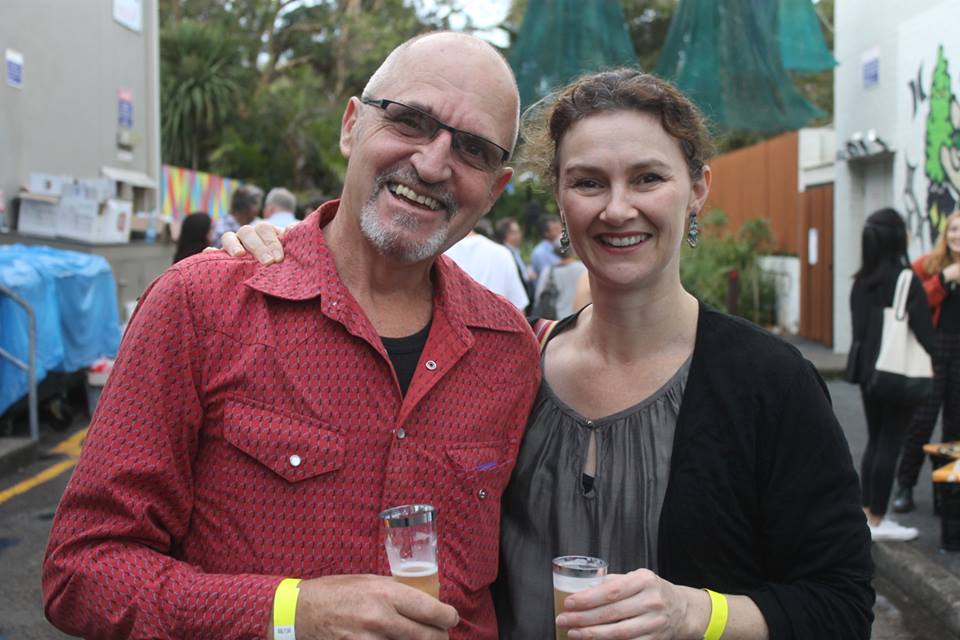
John Ogden and MAG&M Curator Katherine Roberts at an Avalon Art event opening.
Where and when were you born?
I was born in Adelaide, South Australia in 1952.
What was that like, growing up there?
Australia in general was a bit of a cultural backwater in the early 1950’s and Adelaide seemed particularly remote. After a couple of years the family moved to Brighton Beach, on St Vincent Gulf, and that instigated my interest in and love affair with the ocean. In those low-tech days when I was a child I’d just go down to the beach and play.
When did you leave?
As soon as I finished school. I came from a fairly strict family and initially left home when I was about 16 and hitchhiked across to Victoria, to Torquay and the Great Ocean Road. I was there for about three months before I returned home. I then went back to school for a year before making my way up to the Northern Coast of New South Wales, living at Angourie for a while in 1971. At one stage I even worked in Manly on a building site as a brickies labourer, one of the hardest jobs I’ve ever had. It was at that stage that I saw this coastline for the very first time. I’d read about it in surf magazines –there weren’t a lot of surf magazines in the 1960’s, but they often wrote about this place – a lot of the world champions and surf heroes came from here. Adelaide is a pretty dry old place and to see sugar plantations and banana plantations along this coastline, it seemed like the most exotic place in the world. I put a memo in the back of my mind that I’d move here one day.
I actually worked for Tracks magazine in the 1970’s … by that stage I was living I Western Australia.
How did that come about – how did you get your first photo into Tracks?
Well, what happened was – after I’d come up here for a while I went back to South Australia and I’d been called up for Vietnam… it remains the only lottery I’ve ever won. I was a conscientious objector and so took off and went to Bali in early 1972, when I was 19, and was totally blown away by that experience. I was going to keep going and head off on the hippy trail through south-east Asia and across to London, but I didn’t have any money. I ended up going back to Adelaide and working in a Psychiatric Hospital for a year and a half as if you were working or studying you didn’t qualify for call-up. As it turned out I was in the last call-up before Gough Whitlam brought an end to our involvement in the Vietnam War. While working at the Psych Hospital I got my first 35mm camera, - this was when I was about 20 – and started to get into photography seriously.
In 1973 I took off for good. I started working on tuna boats near Streaky Bay in SA.
After the first fishing season finished spent that winter at Cactus in the Great Australian Bight. Some of my photos started percolating into Tracks and before long I was the west coast correspondent. A lot of those early photos from Cactus ended up in the recent Cactus book by Christo Reid. Eventually, I spent a few years in Indonesia and other parts of SE Asia in the early 1970s.
What was the first one?
I can’t actually recall. It seems so long ago. It’s a long and involved story but I actually moved away from the coast for a while. I was in Thailand and Laos during the last days of the war in Vietnam and started working as a kind of freelance war photographer but I was a bit of a failure as a war photographer. I went to London to sell the photographs and lost the whole lot at the airport – they got stolen, my bag got stolen while I was in a phone box.
By this stage I was interested I film making. I had met Neil Davis while I was in south-east Asia … he was the famous Australian film photographer who shot all the Vietnam war footage we used to see on the news each night in the sixties. He’d inspired me to get into film-making … which is why I’d gone to London, to study filmmaking and sell some photos, but as I said, lost my portfolio and flew back to Western Australia in time to protest the sacking of the elected government by the queen’s representative. No revolution … but I began film studies there.
I ended up studying at a university in Western Australia and that’s when I go an official role at Tracks and became their contributing photographer for Western Australia.
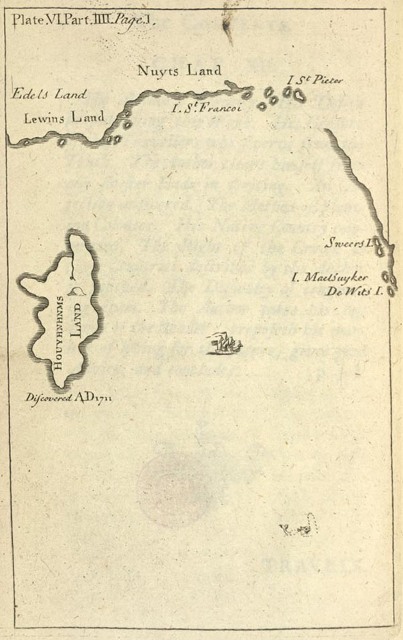 I never had any flash telephoto lenses and you never paid
much money by surf mags so I used to do stories around the edges of surfing – I
wasn’t the one chasing the latest surf contest – I was a bit of an old soul
surfer, so I did a lot of peripheral stuff.
I never had any flash telephoto lenses and you never paid
much money by surf mags so I used to do stories around the edges of surfing – I
wasn’t the one chasing the latest surf contest – I was a bit of an old soul
surfer, so I did a lot of peripheral stuff.
What’s your favourite of the material you published then?
There’s one I did on Cactus that came out like I wanted it. I was studying literature at university as well as filmmaking and we were studying the works of Jonathon Swift. I realised that he had used some of the maps of the early Dutch explorers for the illustrations in Gullivers Travels. For ‘The Land of the Houyhnhnm’ (sounds like a horse neighing) chapter the map he used was taken from explorer charts of Nuyts Land - an island group off the coast from Cactus on the Great Australian Bight. I wrote a whole story about this fabled Land, a thin disguise for Cactus.
Right: Hermann Moll: Map of Houyhnhnms land, for the 1726 edition of Jonathan Swift's Lemuel Gulliver's travels into several remote nations of the world
That kind of style has carried through to your current works – to align or illuminate where these original texts meet real historical records and physical landscapes.
Yes – hadn’t thought of that before, but you’re right.
What was it like being involved in that part of the surf industry then?
It was fun. Surfing was a relatively new sport then. Sounds like a Monty Python sketch, but growing up and going surfing in Adelaide in the early 1960’s we didn’t even have board shorts – we had to go to the army surplus shop and get a pair of old army shorts - and wetsuits were a woollen footy jumper with the arms cut off . Adelaide winters are pretty bleak so it was tough work. Those early pre leg-rope days, with the short board revolution were pretty exciting. Young people were starting to get a bit of money and had cars – so the surf safari was a big part of the culture, and that branched out into travelling overseas to ‘discover’ places to surf.
Coming up here on the north coast of NSW in 1971 was brilliant. Angourie was uncrowded, and people like George Greenough were living in the area – we used to see him down there filming with this massive big water-housing strapped to his back while he was filming this point-of-view stuff for Innermost Limits of Pure Fun … a film I actually saw played during a Pink Floyd concert in Knebworth Manor in England in 1975. Above the band was a giant screen showing George Greenough’s footage from the NSW north coast with over 100,000 people watching. Apparently they’d done a music swap – he got the music rights and they got the image rights. That was kind of bizarre.
And then Morning of the Earth was shot around the time that I first went to Bali – so it was all happening. I was only a witness to it all … I hadn’t really got into photography at that stage.
Even in 1980, and even though I’d drifted away from surfing a little bit, to be on the North Shore after growing up with all the stories, and find myself out in the line-up with the water camera filming the Pipeline Masters – it was a buzz. Because you were there to record everyone else’s epic deeds you weren’t considered to be an enemy. They wanted you to get the shot, so apart from having to watch all the fun, it was great.
What was you first surfboard?
It was actually a toothpick that my dad made. After he finished his service in the war (WWII) he worked as a carpenter and there were new materials that were developed during the war, so he built one of those hollow marine ply boards. It was about 18 foot long, had a wooden frame with a skin of laquered marine ply, and had a plug to let the water out. It was this massive thing … my friend Matthew Martin and I had to build a cradle out of bicycle wheels to get the bloody thing down the beach it was so heavy.
That was the starting point though – just to get out there in the waves on this bulky craft. Then Matthew got a cool-lite board and I somehow talked my dad into getting me a Malibu which was an old Ron plank - which I think used to be manufactured in Sydney in those days. It was a mongrel of a board but it was my first fibreglass surfboard.
I think dad always regretted building me that first board and then getting that second one because that was it – I was addicted. I didn’t get that office career he had I mind for me.
Who was your favourite surfer to film?
In 1971 there was hardly anyone in Bali but by 1980 there were a few more – we had our own surfing crew. Peter McCabe and Rory Russell were the guys we were hanging out with mostly. Jerry Lopez was on the edges of that filming and Jerry had always been a bit of a hero of mine through being so strong at Pipeline.
When I actually went to Hawaii that was the reign of Mark Richards, who I never really got to know. I did befriend Buttons who I thought was a gifted surfer – just a natural. There was also Marvin Foster – they were the main guys I hung out with.
When or how did you end up back over on the east coast?
It took a while – I got married in Perth and had a baby. I left there around 1980 after finishing film school and got a job as water cameraman on a surf film. I went to Indonesia for six months and then Hawaii for the North Shore winter season and eventually ended up back here for the Australian part of the filming. Filming finished with the huge surf at the Bells 1981 contest, and following that I stayed in Victoria for 15 years. My real career started there … and I had another kid, Harley, while living there.
What did you do in Victoria for 15 years?
By that stage I’d finished film studies and didn’t really want to be a surf photographers as the money was so bad and I had a family to support and I grew sick of hanging around surf contests. There were a lot of pretentious surfers and hangers-on and it put me off. I wanted to make some serious films but ended up working on commercials. Eventually, I did work on a few documentaries and feature films – some of them pretty pivotal.
In the early 1980’s I spent a few years working on aboriginal documentaries and had some amazing experiences. One was called The Pintubi, which was a three by one-hour series based on the life of a man called Nosepeg Tjupurrulla. His story was quite incredible because the Pintubi lived in a very remote section of the Great Western Desert near the Western Australia border and a lot of them had never met or heard of Europeans until the 1950’s, when they were rounded up out of the Western desert so the British could test their atomic bombs. The men we were filming, Nosepeg and half a dozen other old Pintubi men, had been old enough to be fully before they had their first encounters with Europeans.
Nosepeg’s first encounter with a European was with a man on a camel, which he’d never seen either creature before. He thought it was a beast with two heads, and got such a shock he fell off a rock ledge and twisting his ankle. He ended up being put on the camel and taken to one of the welfare towns set up for the disposed Aborigines. There was another guy named Helicopter Tjungaroi … you can imagine what his first contact was.
These guys were amazing and I spent months with them out in country I really remote parts – they took us to some incredible and quite sacred places. They’re all dead now so they were the last of their kind in that they had been fully immersed in the Dreamtime culture of Aboriginal Australia without contact with Europeans. There’s none like that anymore – so I was very privileged to meet these men and spend time with them.
There was another film ‘Triumph of the Nomads’ which was a three by one-hour series based on Geoffrey Blainey’s book. His book was basically making the point that Aborigines were doing very well before we came along – they weren’t the poor dying race that they are made out to be. At that time of first settlement many of the English and Irish convicts and settlers had been poor peasants, use staple foods consisted of one type of meat and two types of vegetables. The Aborigines had about 30 types of meat and the same amount again of vegetables. So they lived very well and the TV series mainly focused on that.
Another was called Peppimenarti which was about an Aboriginal run cattle station up I the top end. So they were quite good days.
Why were you attracted to our Aboriginal peoples as subjects for your documentaries?
The first time this really became active I my mind was when I was in London. I went to a party and because I had an Australian accent somebody accused me of being privy to the genocide of the Australian Aboriginal. Growing up in the 1950’s you didn’t learn anything about Aboriginal culture at school, it just wasn’t spoken about… but I think a lot of people had a quiet whispering in their hearts that something wrong had taken place, a great injustice. When this person accused me of being part of that, I actually felt quite dumb because I didn’t understand the issue. It startled me that there were who knew more about my country than I did.
So when I went back and went to uni I made sure that I learnt what I could. I studied a couple of units of anthropology and one of these was six months studying traditional mythology and the sociology of Aboriginal culture, which was enlightening. I then did another six months dealing with post-contact legislation, which was incredibly heart-breaking. … and really frightening. It really shaped my sense that a great injustice had taken place.
I’d come from a family of Irish Catholics who had a strong sense of social justice, so by working on those docos – even though I didn’t actively go looking for them - I had come full circle. In 2006, after my mum died, I found out I have Irish convict heritage and probably have Aboriginal ancestry myself. The evidence is mainly anecdotal – I can’t find any paperwork and may never do so, but that doesn’t really matter. The interesting thing is that it could explain my strong sensitivity about Aboriginal culture.
I’ve always been interested in this … since returning from England in 1975. In 2008, after many years of research, I authored and published Portraits From a Land Without People which raised $82,000 for the Jimmy Little Foundation’s work helping improve Aboriginal health. For the last 3 years I have been working with an Aboriginal men’s healing group called Gamarada, which meets every Monday night in Redfern.
What does 'Gamarada' mean?
I’m not sure what dialect it’s from … perhaps from Dharawal or Dharug … but it essentially means ‘comrade’. Gamarada provides a healing space for Aboriginal men. I can’t talk about it too much because it’s confidential – a lot of the men come from the justice system, and our work is built on trust.
As you’re probably aware, Aboriginal prisoners represent almost half of the prison population in some states, when they number only about 2% of the general population. There are very uncomfortable reasons for that- so Gamarada does a lot of work with these men to address the issues they’re facing – anger, healing and hopefully turn their lives around.
So the commercials were to fund the documentaries?
Not really – when I first started I was camera assistant, gaffer, grip … whatever was needed when making documentaries. In some of the dramatised segments I even had acting roles. I soon started to get work as a DOP (Director of Photography). It started with one of my first jobs which was a very low budget feature film called ‘As Time Goes By’ and it got I think four out of five stars on the Movie Show. All of a sudden my career was just about to take off … but at the same time, this was about 1986, the economy collapsed and there was no money available for filmmaking. Because I had a family and needed to put food on the table, and didn’t want to go back to camera assisting, I started shooting second unit on a TV series, Mission Impossible, up in Queensland. After that I started to get work on music videos and TV commercials … basically it just ballooned from there. Luckily I was good at what I did and ended up being very successful during that 15 years in Melbourne, which in turn financed my move to Sydney.
Working in film – what was your favourite – documentaries, film clips, commercials…?
I enjoyed them all. They were all different. Feature films were great because people take you seriously and you’re allowed to develop an extended bit of story making where people sit in the dark for an hour or two and allow you to create the story for them. Whereas with a television commercial you’re given 30 or 60 seconds and most people head into the bathroom when it comes on. But every job was different and interesting and took you around to all sorts of places – I travelled a lot throughout the world – right through Asia and Europe, America and South America, shooting commercials.
Feature films, in a theatre, was always the bee’s knees for any cinematographer. Here you were taken seriously. On the other hand, in the Australian experience, there was more money in advertising. It’s all a matter of scale … here a music video budget was big at $20,000 whereas in America it would $20 million.
What year did you move to Sydney and where did you settle?
Invasion Day 1996, ironically. We rented a property on Pacific Road, Palm Beach, for a while, which was wonderful, and then ended up buying a property in Whale Beach before prices boomed. It was a rundown place but it was wonderful. I moved to Avalon about 10 years ago.
Were you still surfing then?
Yes – it was only a few years after I got here that I poked my eye out in a surfing accident at the south end of Whale Beach, one of my favourite spots to surf. Because I was living close by I could just check it out from my place and jump on it whenever it was good. Not many people surfed it in those days before surf cams but Martin Potter (Pottz) was often out there, and hardly anyone else usually. It was a brilliant spot until the day I poked my eye out with my fin.
What was it like to lose an eye when you love being behind the camera?
It was painful and I almost passed out because I was concussed too – I was lucky to survive. The beach was closed and there were no life-savers, so I had to rescue myself. Career wise, at first it was pretty bad and felt like going from rooster to feather duster overnight. I had been working with the best directors in town and suddenly the phone stopped ringing. It was a bizarre time.
You could still see though?
Yes – it’s a monocular job, you need only one eye against the lens, that’s the way it works, but there was also always this joke ‘you only have one eye, you can work for half price.’
Underneath that kind of blunt Australian humour was a lot of intent as well. I was seen as damaged goods. So I ended up directing a lot and working overseas a lot. That was part ‘stuff you!’ but I found that just when things were going quiet here I was starting to boom overseas.
Where did you go?
Mostly Asia in countries such as Japan, China, Korea and even India. I also did a lot of work in SE Asia - in Indonesia, Thailand, Vietnam and the Philippines. These were all commercials. The style of these SE Asian commercials were very old school, but the scale of their marketing was impressive. I remember one if did for the Indome company to promote an instant noodle product made from wheat (from Canada, not Australia because we hadn’t got into that market). Indome sold 18 million units of that instant noodle product every single month. The scale of it was just mind boggling … and the market there had by and large only just got into TV advertising.
When did you put your first book out?
The first one was when I was in recovery from losing the eye. In 1999 I authored and published a book called ‘Australienation’ - a pun on the word ‘alienation’ - a book of black and white photographs. It was designed by John Witzig, who used to be editor at Tracks. Then I was back I film-making for a while but I’d also gone through a divorce, travelled to Africa, then lived in Prague for a while, moved around a bit, writing, painting and taking photographs.
Most people may not know you also painted...
I only did it for a short time but one of my paintings, of Gretel Pinniger, won the Real Refusé at Tap Gallery. It takes me a long time to paint and for me, a painting is never finished, simply abandoned, or put aside, so I went back to photography again because I find it easier to move on.
A lot of your books sell out, quite difficult to do for a self-publishing press – why do you think yours are so successful?
Well, they’re only small print runs. In America you have 50 thousand and 100 thousand print runs – with the Saltwater books I’ve only done a 3000 print run. When you are publishing $100 local history books, there is only a small market. Big publishers don’t do local history books anymore.
On the northern beaches people appreciate the work that has gone into such a book. There’s not a hell of a lot of profit in it even if you do sell out, I’ve had to borrow money from the bank to make these books so it’s a highly speculative enterprise.
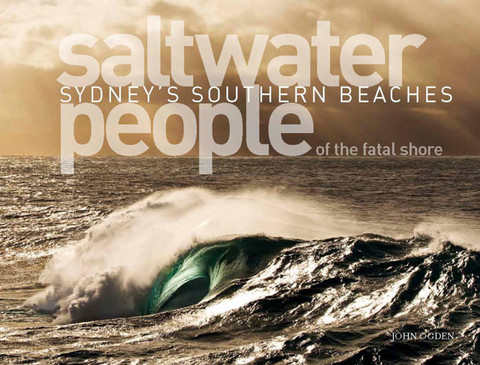 Your
second book in this series – Saltwater People of the Fatal Shore – Sydney’s
Southern Beaches. This was to compliment the first book – Saltwater
People of the Broken Bays – where does it start from?
Your
second book in this series – Saltwater People of the Fatal Shore – Sydney’s
Southern Beaches. This was to compliment the first book – Saltwater
People of the Broken Bays – where does it start from?
The geographical boundaries are from South Head to the Royal National Park inclusive. It was difficult to find the right title because when you say southern beaches, people think of the Wollongong area, but it covers the south-side beaches of Sydney.
‘Fatal Shore’ is a reference to Robert Hughes book ‘Fatal Shore’ but he actually took that title from a poem that was written by a transportee to Van Diemans Land who was writing about there but I think it’s really appropriate for that section of coastline. It’s where Captain Cook first sailed into and first trod on the land here and then where the First Fleet arrived – so it was the sharp end of the European Invasion so that’s why the ‘Fatal Shore ‘ – it has other repercussions to it.
How long did it take to put this one together, to track down the correct archival photos to go with the archival text?
Yes, history can’t be made up - it has to be correct. The Northern book was about a year and a half of research in it and while I was doing that I actually put aside a lot of stuff I was turning up on the south-side but I think it was about a year of extra research for the new book – so slightly shorter. It was also basically a companion book so I knew what I was doing from the first one. It follows the same format.
The northern beaches book went so well, and has now almost sold out. It seemed a no-brainer to do a companion book on the south-side. This coastline has more stories than the first book, mainly through people pressure, so the new book is bigger – it has 24 more pages then the North book to try and fit it all in.
A lot of people get upset by the word ‘Invasion’ but there’s no other way to really look at it. There was over one thousand soldiers and convicts who arrived in the First Fleet and there was only an estimated population of 5000 Aborigines living along the coastline. It would be like 500,000 armed foreigners arrived in ships at the same time right now – you’d think of it in terms of invasion. It’s not hard to see why Aboriginal people would get offended by things such as Australia Day, which is celebrated on the date of the arrival of the First Fleet.
I went to a talk by Henry Reynolds the other night on his new book ‘The Forgotten War’ and he makes the point that there are two ways to take a country – one is by stealth, by stealing, by force, and the other one is by treaty. We never had a treaty with the Aborigines so the consequence of that is they were invaded…and he has done a lot of research that shows there was a war that has been forgotten.
Apart from those sensitivities, Aboriginal nations along this coastline should be viewed as maritime nations, with a canoe culture. A lot of their exploration of the country was done via the coastline, as Europeans had done in more recent times. A lot of my help from the books came from Keith Vincent-Smith a well known historian who wrote a book called Mari-Nawi which means ‘Big Canoe’. He did a lot of research on canoe culture that was developed into an exhibition at the State Library of NSW (2010- MAKING OF THE CANOE A full-scale model of a Sydney bark canoe is the centrepiece in the Library's new landmark exhibition Mari Nawi: Aboriginal Odysseys 1790-1850.) That was the genesis of what was to become an annual event or a convention of indigenous canoe making – this has been fantastic as people come from different parts of Australia and demonstrating the different ways that canoes were constructed. The canoes are quite impressive in their design and practicality. See: http://www.sl.nsw.gov.au/podcasts/videos/mari_nawi.html
Early European ships would see people fishing in these canoes up to two kilometres out at sea, out in big surf, so they were actually quite well made craft even if they didn’t look like it. The convention has become a quite popular event and is a point of pride with Aboriginal communities.
The Saltwater Books have just been nominated in the finals for the biennial Frank Broeze History Prize in association with the Australian National Maritime Museum.
People who have bought the first book – what will they get from this second book?
It will give them a broader view – one of the interesting things about the South book is that it includes Botany Bay area and the remarkable history of that area. One of the things about Botany Bay is that it was once a garden of Eden … people only had to work a few hours a day to have enough seafood and what else to live and the rest of the day was devoted to ceremony and family. Within a short period of time after European settlement, it was turned into pretty much a toxic dump. Many toxic industries, such as wool-washing, the oil refineries, the early powerhouse, were put in that area … followed by dredging and land filling to build the ports and the third runway, creating erosion issues. Fish breeding grounds were destroyed and the famous Botany Bay oyster now extinct. This area represents an analogy to what could happen to the rest of the coastline. Fortunately, there has been a lot of work recent years to remediate those problems. By looking at the culture of the First People a very strong sustainability thread runs through the books – especially in relation to water cleanliness and land use.
The other thing is that Botany Bay was the arrival place for the first Europeans on the east coast. In the lead up to the last elections there was a lot of political and media fear mongering about refugees arriving by boat. It is a point of irony that this is exactly how the first settlers arrived just a few centuries earlier. The other aspect is of course that the larger amount if illegal immigrants arrive by plane – so they’re still arriving at the Botany Bay area, now via the country’s main airport – so that’s another little irony as well.
You have just published a new book ‘Slightly Dangerous’, what is this about?
I started writing down stories when I began to go blind in my other eye (from a cataract) around 2008, and couldn’t work in film for a while. Fortunately the corrective surgery was successful. Then, at the beginning of this year, I had an exhibition at the Manly Art Gallery and thought I’d finish off my note to clarify different points of this exhibition. I was getting good feedback and ended up creating a book. The exhibition ended up being a retrospective as I spent so much time working on the book that I didn’t take many new pictures. I had just turned 60 so it was a good time to look back and reflect. ‘Slightly Dangerous’ is a collection of stories, not an autobiography, and more about influences and inspirations … just as we have been talking about today.
How many photographs to do you estimate you have taken throughout your career?
I looked at 300 thousand images when I was doing research for the Portraits book so it’s more then that. I guess it would be over half a million.
You have created your own path in many mediums, gone out and done it for yourself. What would you say to anyone who is beginning to work in photography, film, painting, collating and publishing books about how to achieve what you set out to do?
The main thing would be that it’s tough, unless you’re incredibly lucky. That’s what that book was about … looking back at a quite extraordinary time. It’s always incredibly difficult to look forward and see the path ahead - and much easier to look back and join the dots. By doing that process you can see that just by following your heart it creates; a kind of ‘if you build it they will come’ manifestation. That’s always been my philosophy.
The world is changing - it’s very different to what it was when I started off – there were hardly any film schools, and not many photo journalists, and now we’re swamped with new media. Everyone has a camera, every phone has a camera. If you want to stand out in a party crowd now you say you’re an accountant rather than a photographer. It may be easier to get access to information, but maintaining a career can be tough. There are a lot of graduates coming into a shrinking market. Newspapers are sacking their staff, and journalism has become more an advertising job than exposing the truth.
All the industries I’ve worked in - photography, film, publishing – they have all been quite dramatically impacted by the digital revolution accompanying the information age. There’s good and bad things about that. When I started in the film industry it was a 5-6 year apprenticeship before you got near a camera, because cameras cost millions of dollars back then and it was a thousand dollars for every three minutes of film (35mm film). Now the digital evolution has democratised the process by making it more affordable. This means you can get an early entry … but the problem then becomes longevity, because there’s always someone who is going to come up and do your job for free.
To have a career in these fields, and raise a family, and all the costs of living in a place like Sydney, it’s going to be a really tough career choice. There’s probably safer careers to do. Technology has reached its expediential curve where the things invented in the 20th century are more than the two thousand years before that and what has been invented in the last ten years is more than the last century. That expediential curve means it’s pretty hard to predict what’s coming up … which can be exciting … but it can also create a lot of anxiety.
What’s coming up in the future for you?
Cyclops Press is about to launch a book by author Peter McConchy titled Fire and the Story of Burning Country. In a similar vein to The Biggest Estate on Earth by Bill Gammage, Fire challenges long held perceptions and helps us understand traditional land care and management – this time from the Aboriginal perspective. In these pages the Elders explain to us “we need fire because Australia is a fire nation”. Fairly timely as we approach a hot summer and having watched Barrenjoey burn.
Personally, I’m currently working on a book and a film script that I can’t talk about now, but hopefully you will read about here in the near future.
What is your favourite place/s in Pittwater and why?
Barrenjoey – when I stand up there it probably has the best view in Sydney – it’s almost a 360 degree panorama.
What is your motto for life or a favourite phrase you try to live by?
There is a recent one – The eyes are useless when the mind is blind.
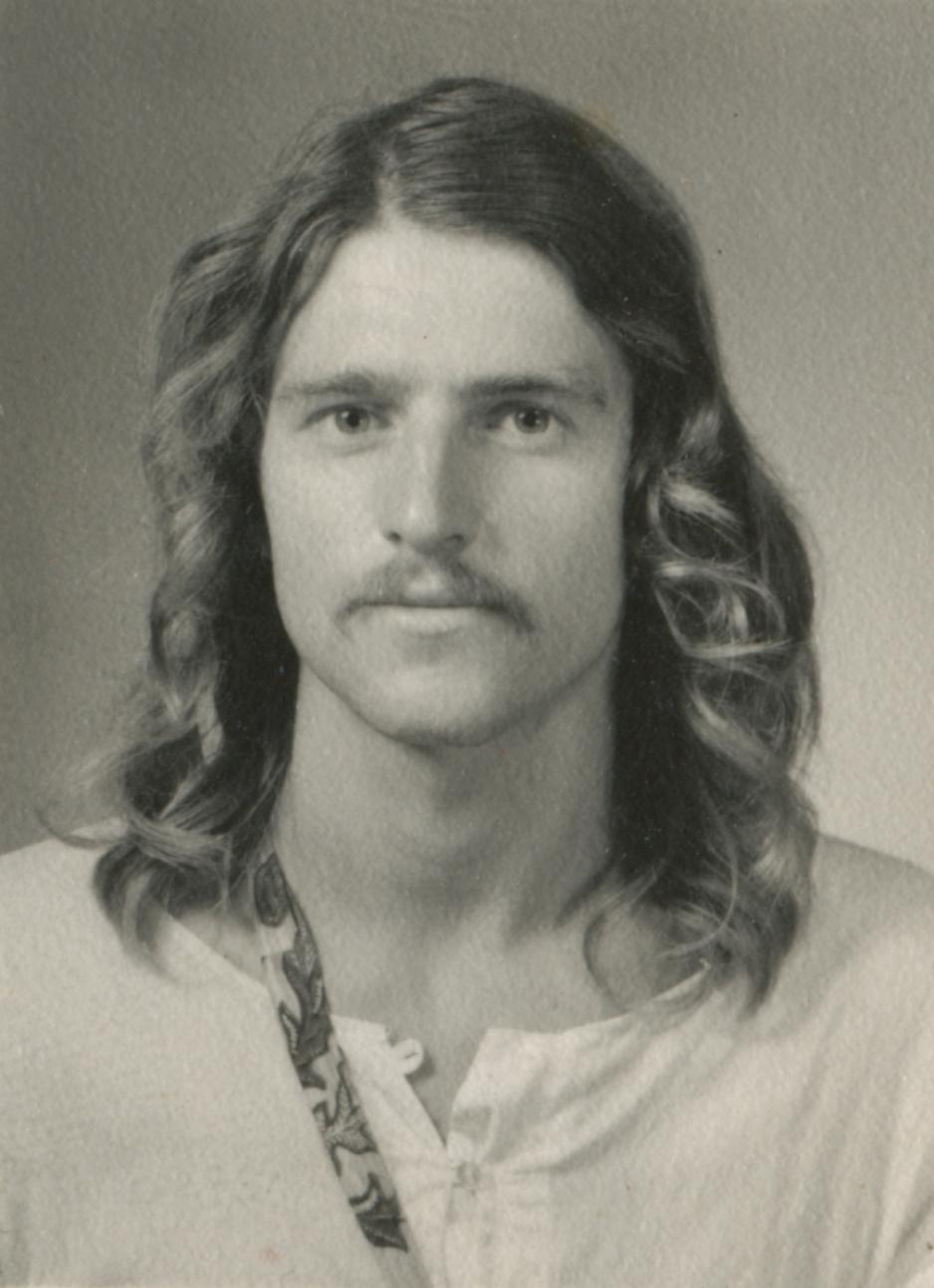
John Ogden - when younger.
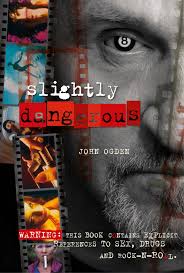 Slightly Dangerous - $45.45
Slightly Dangerous - $45.45
Slightly Dangerous celebrates forty years of photography by John Ogden, and provides a cypher to his body of work. It is important to occasionally look in the rear vision mirror while hurtling headlong into the future, and Ogden’s thoughtful work reminds us what is lost in the rush.
The foreword to Slightly Dangerous is by Tim Page, one of the world’s best-known war photographers. His career began in 1964, recording the start of the civil war in Laos. By coincidence, Ogden would find himself in Laos a decade later recording the last days of that war. Tim’s exploits in Vietnam were inspiration for the Dennis Hopper character in Apocolypse Now.Amongst other significant photojournalist awards, he is the recipient of the Robert Capa Award and the American Society of Media Photographers Award. He received a citation for bravery from a US military division and he was also named a Vietnamese Cultural Hero of the Revolution.
Here is some of what Tim has to say about Slightly Dangerous:
“This is a life well travelled of a baby boomer who surfs an existential path across six decades, waxing the best of nostalgia against the odds that are self mitigated by the excesses of those times. It is a heritage of the hippest, most gonzo ‘down-under’ attitudes, rendered by images we all wish we had snapped. As if Hunter S. Thompson and Richard Neville shuffled photo cards with Robert Frank’ian images throughout the deck.”
Buy from Cyclops Press: here
Saltwater People of The Fatal Shore - $90.00
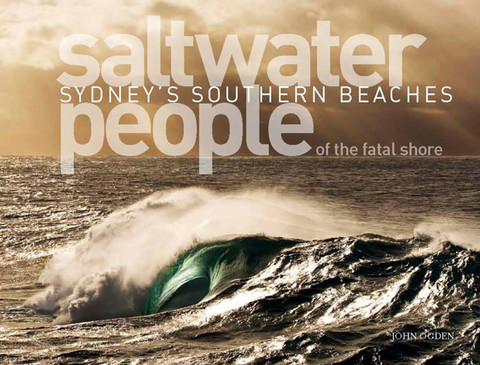 Saltwater People of the Fatal Shore - Sydney’s Southern Beaches is
a detailed history of that beautiful stretch of Sydney's coastline between South
Head and Royal National Park. This coastline features world renown beaches such
as Bondi, Maroubra and Cronulla, as well as places of great historical interest.
Botany Bay was where James Cook first made landfall on the east coast of
Australia and made claim to the continent. It was also were the First Fleet
arrived with its human cargo. Before these events it was home to the Aboriginal
people of the Eora, Dharug and Dharawal nations for tens of thousands of
years.
Saltwater People of the Fatal Shore - Sydney’s Southern Beaches is
a detailed history of that beautiful stretch of Sydney's coastline between South
Head and Royal National Park. This coastline features world renown beaches such
as Bondi, Maroubra and Cronulla, as well as places of great historical interest.
Botany Bay was where James Cook first made landfall on the east coast of
Australia and made claim to the continent. It was also were the First Fleet
arrived with its human cargo. Before these events it was home to the Aboriginal
people of the Eora, Dharug and Dharawal nations for tens of thousands of
years.
The focus of Saltwater People of the Fatal Shore is on the shoreline … that high energy intersection between sea and land where waves, whipped-up by wind and storms, sometimes thousands of kilometers out to sea, announce their arrival in a final dramatic explosion … or caress it with a gentle cascade. This constant, hypnotic dance with the shore can be calming, and it can be confronting. When the swell appears excitement grows and the coastline becomes energized. The surfzone both attracts and influences us … and in turn our presence affects this playground on the edge of the vast Pacific.
It is not just surfers that are attracted to this zone. Sydney’s magnificent beaches have produced some truly unique individuals and some incredible stories. They are home of the world’s most recognized painters, potters, writers, poets, photographers, film-makers, musicians and architects. Saltwater People of the Fatal Shore – Sydney’s Southern Beaches pays homage to those remarkable people who have made this coastline home. The many beautiful photographs found in the book include work by Harold Cazneaux, Max Dupain, David Moore, Frank Hurley, Jack Eden, Bob Weeks, Peter Solness, Bill Morris, Brad Malyon and many other great contemporary photographers.
When asked, very few people living in Sydney know about the Aborigine peoplewho lived along the coast before the coming of the Europeans. There are also many misconceptions about the culture of the first people. One common belief is that they were all somehow frightened of the ocean, but this is far from the truth. The Aborigine clans along Sydney’s beaches were true saltwater people, at home not only in the sparkling estuaries and rivers, but also in the ocean waves. Theirs was a canoe culture. They fished with spears, or lines and hooks, and were accomplished swimmers completely at home in the surf. This part of our history has remained largely hidden, and it is important to reveal here the influence of our Aboriginal heritage not only the people of Sydney, but also on our national psyche.
If we had listened, the Saltwater People would have also taught us much about protecting the coast and its valuable resources. There is now a growing awareness that something is wrong. The natural beauty of the area is under threat. It is obvious that the first people protected this country, and, as they did for many millennia before us, we need to think from the heart and preserve the area for future generations.
The foreword for the book was written by the Hon. Linda Burney MP. Upon her election she became the first Aboriginal person to serve in the New South Wales Parliament. Burney, a Wiradjuri woman, is currently Deputy Leader of the Opposition, and is the shadow minister in several key portfolios
Available from Cyclops Press here:
